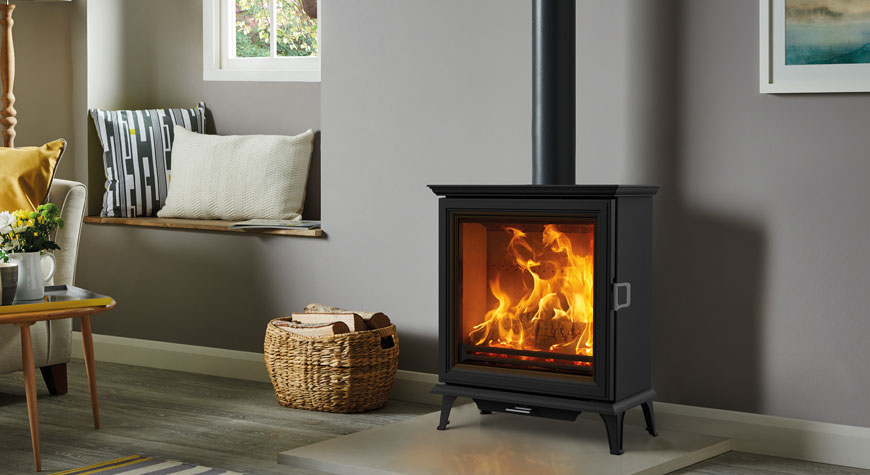Aside from the fact there are obvious safety aspects to consider, the efficiency of your wood-burning/multifuel stove will be impacted if smoke is not drawn properly through the flue and up the chimney. It can also lead to the buildup of potentially harmful tar which can erode your flue pipe and cause other problems with your stove. So, how do you stop smoke coming out of your stove?
Small pockets of cold air
One of the more common problems revolves around a significant drop in temperature especially during winter time. As a consequence, pockets of cold air can become trapped in your chimney/flue which has a significant impact upon the draw hence smoke is circulated in your room. Under normal circumstances, starting your fire in the morning would lead to sufficient hot air to release the trapped cold air and start the draw process. However, if you are still having problems after starting the fire with traditional fuel it may be time to look at using a fire lighter or rolled up newspaper.
The fire lighter and rolled up newspaper should be placed on top of your wood and then lit. This will ensure that the warm air created by the flames directly heats the cold pocket of air which will slowly rise and escape out of the chimney. There are also other issues to take into consideration such as:
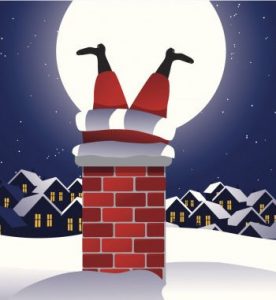
Clean your chimney/flue
Experts suggest that you should clean your chimney/flue either once or twice a year to reduce the buildup of potentially harmful tar. It will also help to identify other issues such as brick erosion, movements in the wall and general wear and tear of the flue liner. All of these will have an impact upon the efficiency of your stove and could lead to potentially dangerous safety issues.
Open the stove door slowly
Wood-burning and multifuel stoves are fairly delicate machines, although you might not think so, and susceptible to changes in pressure. As a consequence, if you very quickly open the stove door there is every chance this could draw out a significant amount of smoke which is not what you want in your room. Therefore, the best way is to open the door slightly, leave it for a couple of seconds and then open it fully. This ensures that the pressure within the stove/firebox area very quickly equalises and does not impact the natural flow of the smoke and hot air up the flue and out of the chimney.
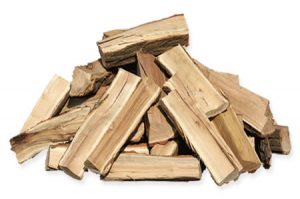
Using dry wood
You should not burn wood on your stove which has a moisture level of more than 20%. It is not difficult to see how this would impact the traditional flow of smoke and gases out of your stove. The gases created using moist wood cause a buildup of creosote in your chimney/flue pipe. This cannot only erode your flue pipe but as the wood is moist it may not create the required level of heat. As a consequence, pockets of cold air can force the smoke back down into the stove and out into your room. It is a false economy to buy cheap wood with a moisture reading of more than 20%.
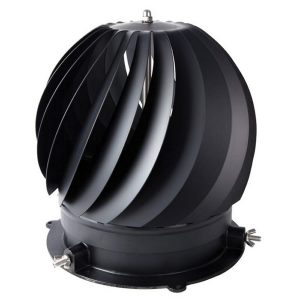
Difficulty with the chimney draw
While there are regulations and advisory guidelines regarding the height of chimneys/flue pipes when it comes to stoves, from time to time you may experience difficulties with the chimney draw. In effect this means that the hot air is not flowing freely up through the flue pipe and out of the chimney because of the reduced draw. Many people might therefore look towards what is known as a rotating aspirator cowl which will spin in windy weather and draw hot and cold air up through the flue pipe and out of the chimney. In a perfect world there would be no need for rotating aspirator cowls but there are certain weather conditions where they can be useful.
Preventing downdraught
Any reduction in downdraught will assist the more natural flow of hot air gases up through the flue pipe and out of the chimney. As the name suggest, the downdraught sees air pushed back down the chimney often creating pockets of cold air and forcing smoke and potentially harmful gases out through the stove and into your room. There are anti-downdraught cowls which can help prevent this although more often than not it will simply be a case of extending your chimney pot to induce natural flow.
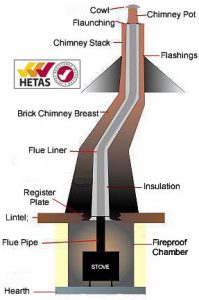
Draught booster
Some people prefer to use a draught booster which is a relatively new technology that sucks the air up through the chimney thereby creating a natural draw. Even though these devices can be extremely useful, due to the type of material in the air they pull up, they can become clogged on a regular basis. As a consequence, there may be a little more maintenance than normal with these inbuilt fans but they can definitely have an impact especially with shorter than recommended flues.
Conclusion
There are many different reasons why your room and house in general may be experiencing excessive smoke. In some situations this may be down to broken stove components but the majority of the issues will revolve around the chimney/flue and the required draw. Who would have thought something as simple as a trapped “pocket of cold air” could cause so much trouble?

